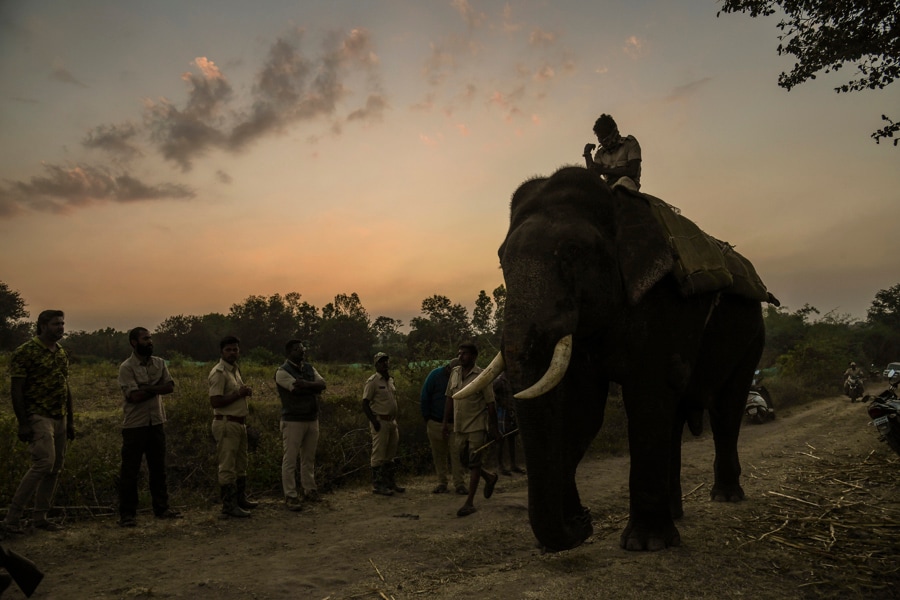
Risking their lives for little pay to guard India's forests
There is little data on serious injuries to forest watchers in India, but the country has recorded at least 318 ranger deaths since 2012, according to the International Ranger Federation
 A forest officer on a trained elephant searches for a stray tiger in a village in Karnataka, India, Jan. 6, 2022. Braving tigers and other dangers, frontline workers face difficult working conditions as they try to keep the peace between humans and wildlife. (Atul Loke/The New York Times)
A forest officer on a trained elephant searches for a stray tiger in a village in Karnataka, India, Jan. 6, 2022. Braving tigers and other dangers, frontline workers face difficult working conditions as they try to keep the peace between humans and wildlife. (Atul Loke/The New York Times)
WAYANAD, India — Armed only with a bamboo stick, Bijesh T.K. was part of a team looking for a tiger that had escaped from a wildlife sanctuary. But it was the tiger that saw him first.
“It tried to bite my neck, but, thankfully, my helmet protected me,” he said, describing the attack last year near Wayanad, in the southern state of Kerala. “Its jaw was so wide that my whole head could have fit inside.”
There was nothing his colleagues could do. They tried to shoo the tiger away, but it clamped its teeth onto Bijesh T.K.’s right arm, refusing to let go, before finally slipping back into the wilderness. His arm was permanently damaged.
Bijesh T.K. and hundreds of other part-timers across India risk their lives every day for a front-line job that is vital for preserving the country’s forests but often pays less than minimum wage.
They battle poachers, criminal gangs, and fires and other disasters, and in this part of the country, where forests mingle with villages, they are the de facto peacekeepers between humans and wildlife.
©2019 New York Times News Service







